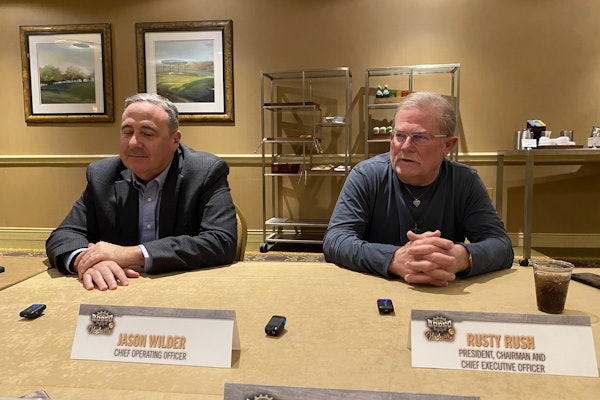While there may be a few distributors or service providers out there who also flip trucks, on the dealer side, that’s the crux of almost everyone’s business.
And that means when news breaks that could impact the production and price Class 8 trucks, dealers eagerly devour the information.
Such was the case in June, when the EPA and U.S. Department of Transportation released Phase II of their Green- house Gas Emission Standards and Fuel Efficiency Standards for Medium- and Heavy-Duty Engines and Vehicles.
I’m not going to dive deep into the specifics of the Phase II regulations— regular Truck Parts & Service editorial readers will know Jason Cannon did that a month ago — but I will tell you this, the NHTSA expects the new standards to raise the price of new Class 8 trucks by $10,000 to $12,000.
Your dealer counterparts are not thrilled about that.
In a prepared statement released just days after the EPA/DOT Phase II regulations hit the newswire, the National Automobile Dealers Association (NADA)
and American Truck Dealers (ATD) responded by voicing several legitimate concerns.
“Affordable transportation is the bedrock of the American economy, and adding—by the Administration’s own estimate—an average of just under $12,000 to the cost of a new truck through mandates based on potentially untested technologies is a great risk to a still-fragile economy,” the organization wrote.
“Recent history has shown that mandates with underestimated compliance costs result in substantially higher prices for commercial vehicles, and force fleet owners and operators to seek out less- expensive and less fuel-efficient alternatives in the marketplace.”
This is true.
It wasn’t long ago that fleets and owner-operators were rushing out looking to get their hands on as many pre-2010 trucks as possible. As we all know, those trucks were the last introduced into the marketplace that did not require selective catalytic reduction (SCR) and/or exhaust gas recirculation (EGR) emission reduction systems in conjunction with diesel particulate filters (DPF).
The ATD fears that is going to happen again before Phase II goes live. They are concerned when they raise their prices the life blood of their business will crater.
There were more Class 8 trucks sold last year than 2010 and 2011 combined, so there are factual reasons for them to feel that way. But at the same time, those years also were the building blocks for the slow climb out of the recent reces- sion.
Not every lost sale in that period was solely price-related.
I don’t think that will be the case this time. The technological enhancements required to meet proposed Phase II standards aren’t expected to be as drastic as Phase I, and our economy is in better shape to boot.
Truck and engine makers seemed more prepared as well, with Cummins, Volvo and the Engine Manufacturers Association (EMA) all publicly supporting Phase II’s introduction in June.
I think this is a good sign for both sides.
While I think dealers have a reason to be concerned, I think Phase II’s rollout is much more likely to mirror the smooth implementation of last year’s rule regulation enhancements than the 2010 debacle.
And if that’s the case, there should be plenty of new and aftermarket truck parts sales to go around for everyone.











